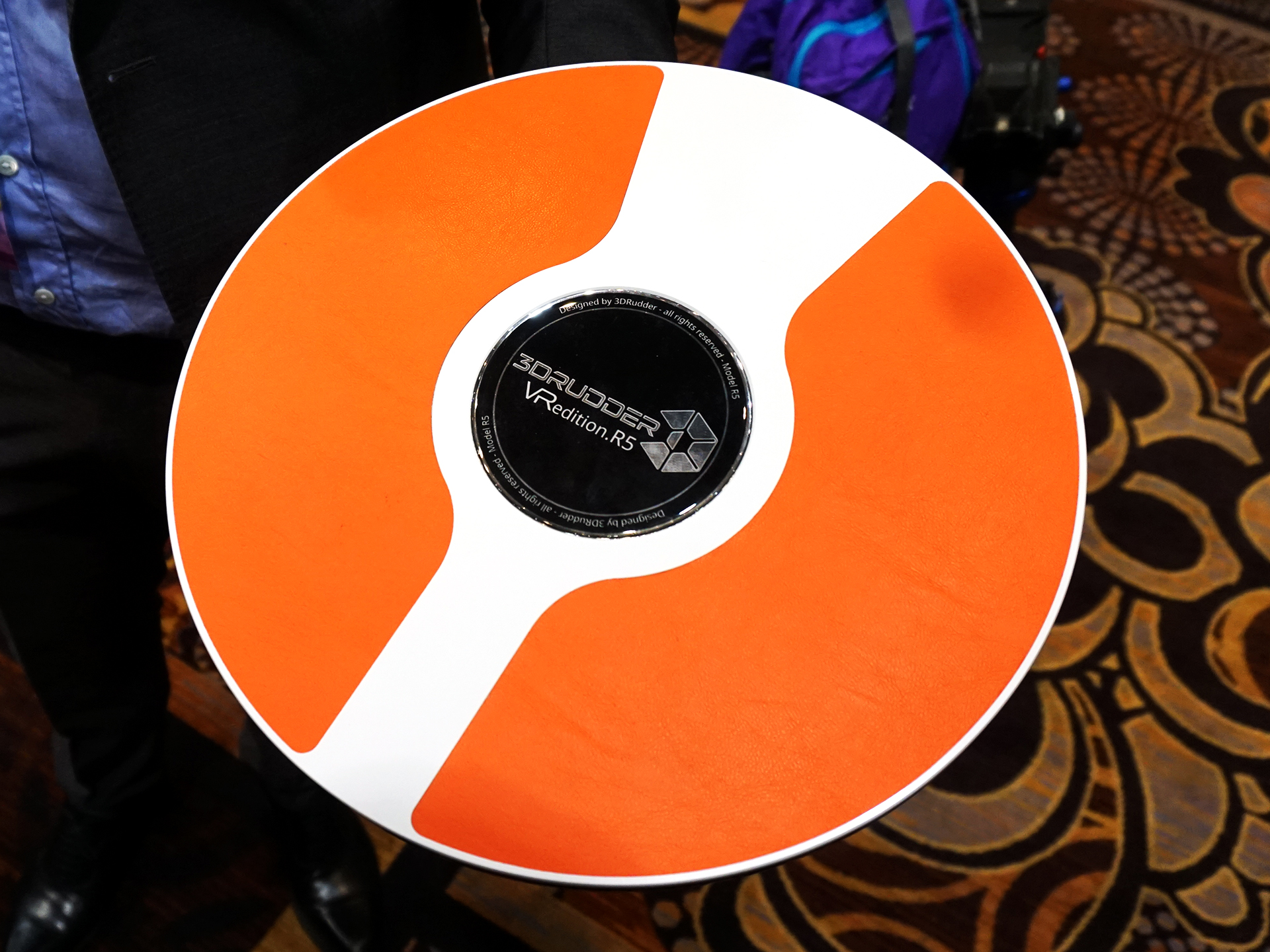More VR Input Mapping: Rewired Unity Input Plugin Adds Support For 3DRudder
3DRudder and Guavaman Enterprises announced that Guavaman’s cross platform input plugin for Unity, Rewired, now supports 3DRudder’s VR locomotion device. Developers now have a simple solution to map 3DRudder’s input to their Unity based games.
3DRudder is a unique new VR input device. It offers the ability to map locomotion inputs to your feet, freeing up your hands for other tasks. The 3DRudder sits on the ground below your feet and registers the direction you rock the device for different movements. It lets you move forward and back, side to side, and rotate left and right, and it even lets you move on a vertical plane. None of these features are useful unless you can map them easily to your game or experience. That’s where Rewired comes in handy.
Rewired is a Unity engine plugin designed by Guavaman Enterprises designed to enable easy cross platform input device support. Rewired is meant to pick up where Unity’s basic input system falls short, giving developers native support for keyboard and mouse, joystick, gamepad, and racing wheel input devices. Rewired also supports specialty controllers such as advanced flight simulator hardware, light guns, and now 3DRudder.
“The 3DRudder represents the first in a new category of devices, one that will deepen the immersion experience and change gameplay for the better,” said Augie Maddox, founder of Guavaman Enterprises. “Navigating in a 3D world with your feet just makes sense. The 3DRudder makes it easy and intuitive. It feels like a natural extension of your body. Rewired's support for the 3DRudder gives thousands of game developers immediate access to utilize this impressive new technology in their games.”
3DRudder is available for for $179. The company recently started shipping to early adopters and said that new orders have a one-month three week lead time.
Update, 19/5/16, 8:53am PT: 3DRudder reached out to us to clarify that new order lead time is shorter now.
Follow Kevin Carbotte @pumcypuhoy. Follow us on Facebook, Google+, RSS, Twitter and YouTube
Get Tom's Hardware's best news and in-depth reviews, straight to your inbox.
Kevin Carbotte is a contributing writer for Tom's Hardware who primarily covers VR and AR hardware. He has been writing for us for more than four years.
-
Jeff Fx >“Navigating in a 3D world with your feet just makes sense.Reply
Yes it does, in room-scale VR. Pushing a controller with your feet while sitting down is a poor substitute.
-
kcarbotte Reply17990350 said:>“Navigating in a 3D world with your feet just makes sense.
Yes it does, in room-scale VR. Pushing a controller with your feet while sitting down is a poor substitute.
It's much better than using a thumbstick, which is the current locomotion solution for a lot of games. -
Jeff Fx Reply17990394 said:17990350 said:>“Navigating in a 3D world with your feet just makes sense.
Yes it does, in room-scale VR. Pushing a controller with your feet while sitting down is a poor substitute.
It's much better than using a thumbstick, which is the current locomotion solution for a lot of games.
I think you're right, but I find it hard to get motivated to play a sitting-down VR game, even though I have a nice force-feedback wheel and Project Cars. It's just a lot more fun to run and jump around my VR room in games like Space Pirate Trainer and Holoball than to sit and game. This allows me to game when I'd normally be exercising on my bike, and with room-scale there's never any VR sickness. For sit down gaming, I'll stick with a 1080p projector and 9' screen.
I was really looking forward to sit-down VR with the Oculus Rift from the moment I heard about the Kickstarter, but that was because I didn't even realize room-scale was possible until HTC announced the Vive.

